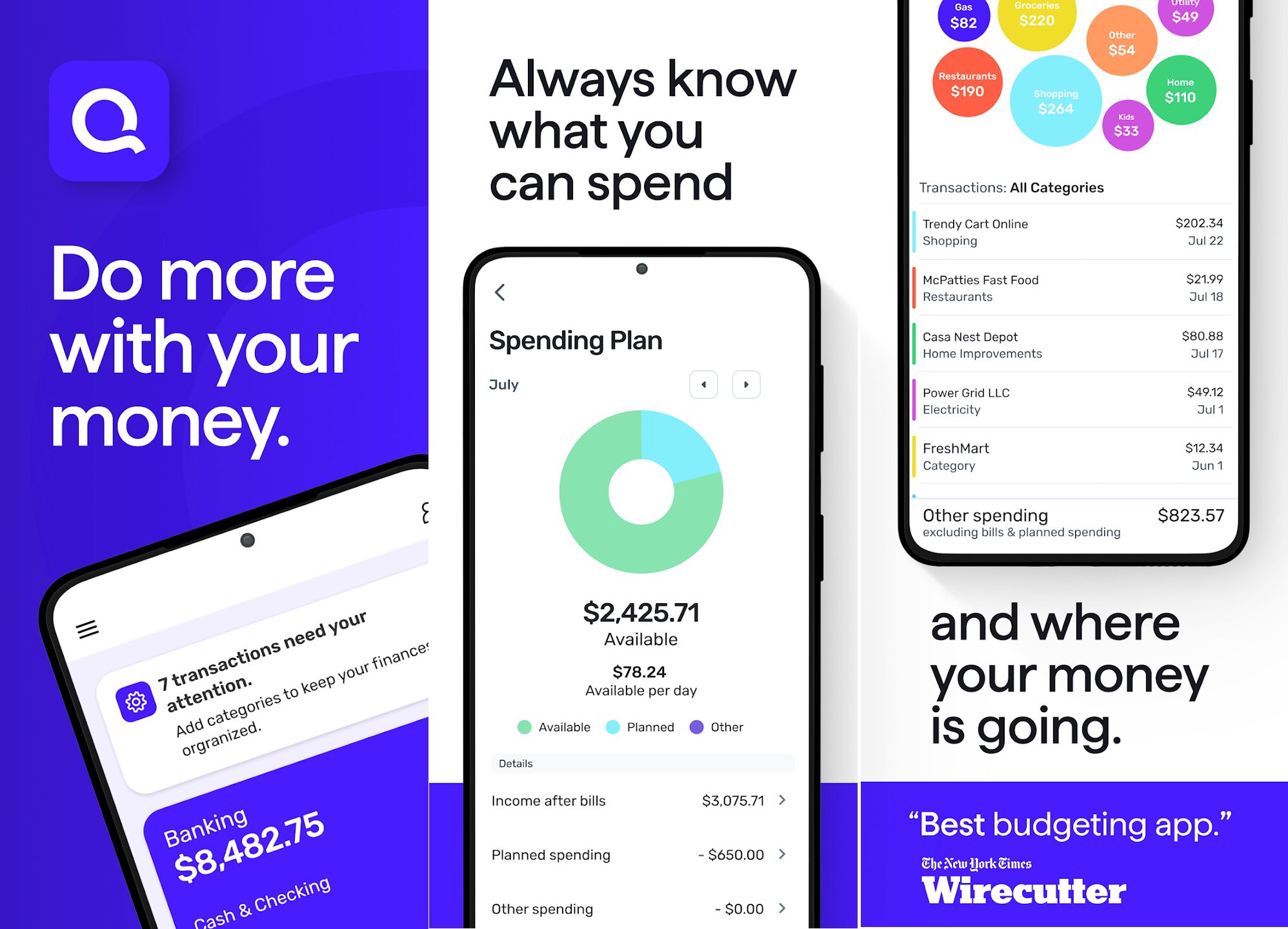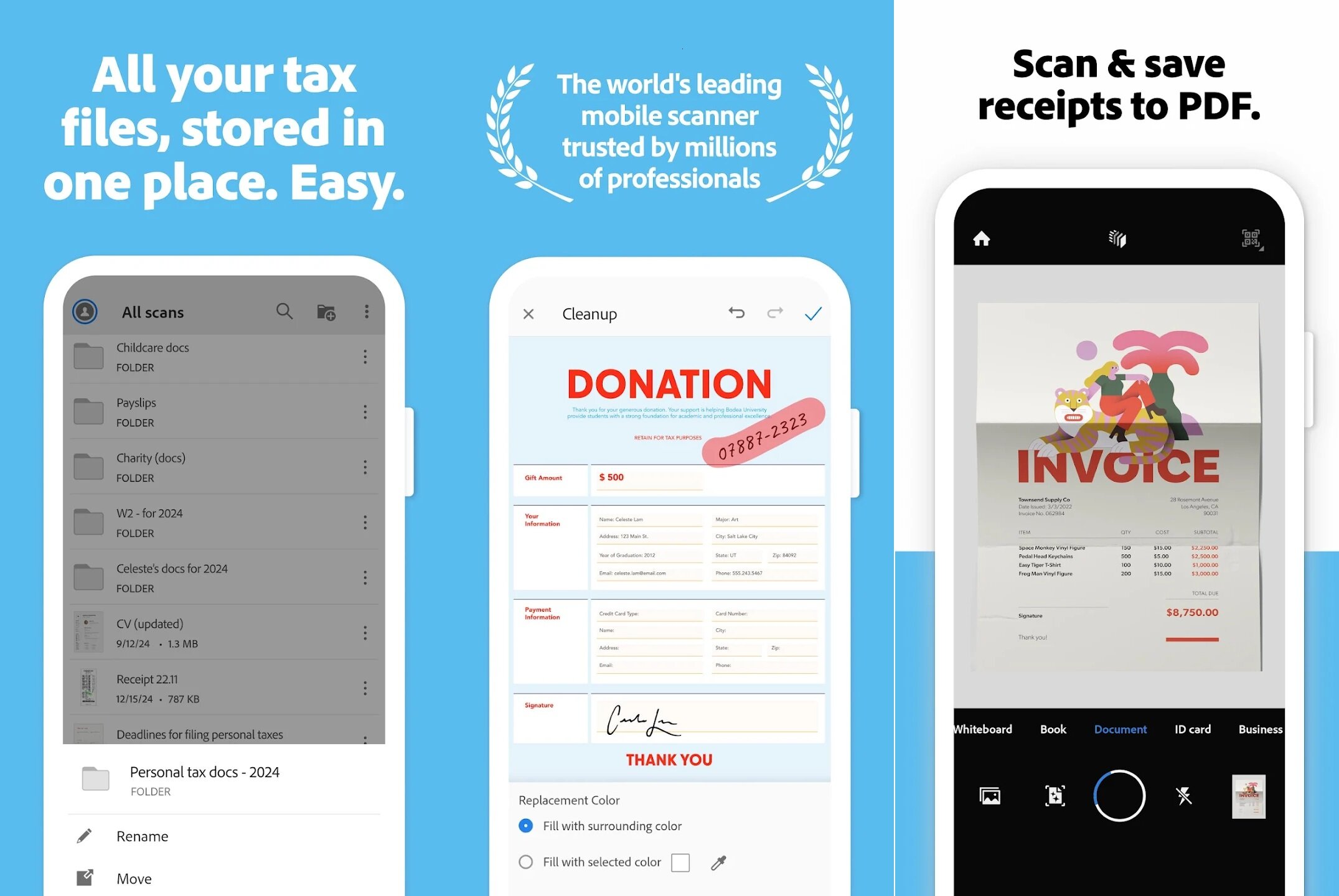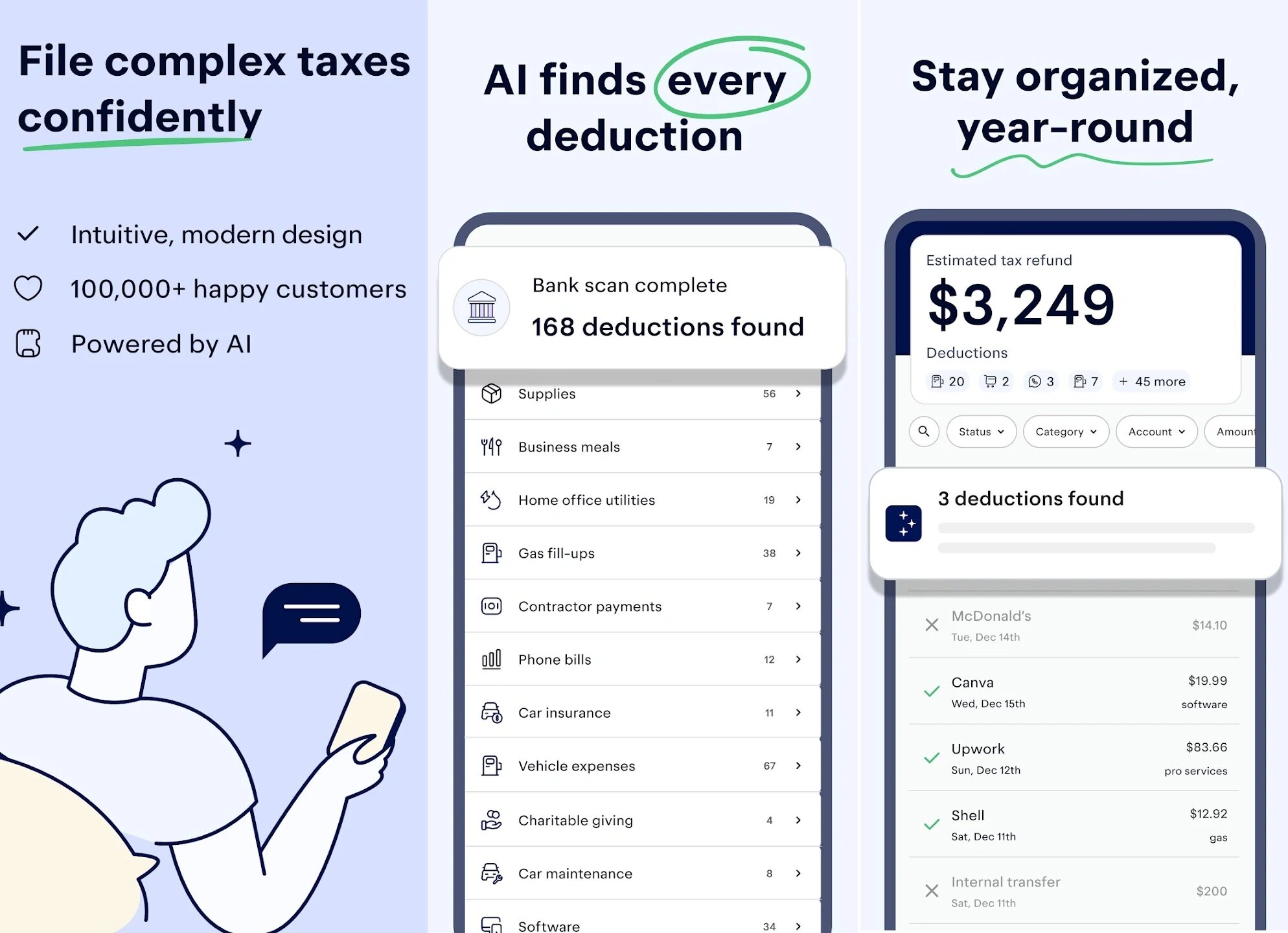Edgar Cervantes / Android Authority
Those of us in the US who haven’t finished our taxes yet are starting to feel the heat as April 15 draws ever closer. Every year, I procrastinate on taxes as long as I can; I always end up owing money and am never in a hurry to pay. If you’re like me and haven’t filed yet, the good news is that it’s fast and easy to do in the age of the internet and modern apps.
Depending on how organized you are or how simple your taxes might be, the whole process could take as little as a couple of hours, or even less.
There are plenty of apps out there designed to make handling taxes easier, although some are intended for use throughout the year to streamline tax prep when the deadline approaches. While we’ll talk about those a bit later, let’s start with software designed for people who don’t plan to use an in-person professional tax service or accountant.
TurboTax vs H&R Block
Two of the best-known names in the game are TurboTax and H&R Block, so this seems like a great place to start. I’ve personally used both over the years, and either one is easy to recommend, though I’ve typically leaned toward TurboTax.
In the end, you’ll get the same result with either service, but there are some key differences worth noting:
- H&R Block has a simple, easy-to-use interface that explains tax concepts clearly as you go. This applies to both the website and the app. TurboTax isn’t hard to use either, but it can be a bit trickier to master.
- TurboTax allows you to skip around different parts of the filing process, so you can complete what you’re ready for and come back to the rest later. That’s possible to some degree with H&R Block, but it’s a bit messier in comparison.
- H&R Block includes basic support from a tax professional in its paid packages at no extra charge. With TurboTax, this kind of help is an optional add-on and tends to be expensive.
- TurboTax offers a more convenient full-service experience through its Live Assisted feature. This lets you work directly with a tax professional (for an additional fee). H&R Block provides something similar by partnering with virtual and in-person tax pros, but it usually requires making an appointment and jumping through a few more hoops.
Pricing is another important consideration. Both TurboTax and H&R Block offer free tiers that cover federal and state filing at no cost, assuming you qualify. In general, the simpler your tax situation, the more likely you are to be eligible for free filing. Here’s what each one lets you do for free:
- TurboTax lets you file a basic Form 1040 with no schedules, except for the Child Tax Credit, Student Loan Interest, or Earned Income Tax Credit.
- H&R Block allows you to file a Form 1040 and even includes Schedules 1, 2, and 3. This means more people qualify for free filing with H&R Block.
For anything more complex, you’ll need to pay. Here’s a quick look at how the two services compare in terms of cost:
| TurboTax Pricing | H&R Block Pricing | |
|---|---|---|
|
Deluxe |
TurboTax Pricing
$69 + $59 per state |
H&R Block Pricing
$55 + $49 per state |
|
Premium |
TurboTax Pricing
$129 + $59 per state |
H&R Block Pricing
$95 + $49 per state |
|
Self-Employment |
TurboTax Pricing
$129 + $59 per state |
H&R Block Pricing
$115 + $49 per state |
So, which one should you pick? It really depends on your needs:
- H&R Block generally offers better value. It tends to give you more for less across all its plans, including the free tier. It also offers competitive options for more complex tax situations.
- TurboTax may be a better choice if you have more complicated taxes. While it often costs more, it offers a number of optional extras that can provide peace of mind, including its Live Assisted feature and the option to have a professional review your return.
- Both services offer strong free options, assuming you qualify. H&R Block’s broader qualifications make it a more accessible choice for many users.
- TurboTax makes it easier to work at your own pace. Personally, the main reason I’m using TurboTax this year is that it lets me move around the filing process more freely. I can fill out the sections I’m ready for and easily see what I need to revisit later. You can do something similar with H&R Block, but it tends to be clunkier and more likely to cause issues.
Other tax programs worth mentioning
If you aren’t impressed by the two biggest tax apps, there are plenty of other options to explore. While I have limited personal experience with most of them, here are a few alternatives that stood out during my research:
- Tax Act is a great TurboTax alternative (Get web app).TaxAct is a web-based service with a mobile-friendly interface. It offers a user experience similar to TurboTax, allowing you to jump between sections with ease. It’s generally more affordable, with plans starting at $49.99 for federal filing. However, state filing isn’t included, even on the free tier. It’s a strong option for basic to moderate tax needs, but self-employed filers or those hoping to file for free may want to look elsewhere.
- Consider Tax Slayer if you care about value (Apple Store | Google Play). Like TaxAct, TaxSlayer is a web-first service with a mobile-friendly design, though you can also use its app as well. Its biggest selling point is affordability. It offers free options, and the Deluxe tier starts at just $49.99. Even the Premier and Self-Employed plans are under $100. While it may not be as full-featured as the biggest names, it covers most needs at a lower price point.
- Cash App Taxes 2025 is one of your best free options (Get web app). If you’re a W-2 employee looking for a simple, completely free filing option, Cash App Taxes is worth checking out. It handles most tax situations with surprising flexibility for a free service. The only catch? You’ll need a free Cash App account to use it.
Other great financial apps for use this year for taxes, and in the future
If you have fairly basic W-2 taxes and don’t own investment properties or have other complexities, simply downloading one of the tax apps mentioned above is probably all you’ll need. For those who are self-employed or have more complicated tax situations, there are some great additional tools that can help. Some of these are temporary-use apps, like document scanners, while others are designed to be used year-round.
Below, I’ve highlighted a few tools I personally use to make tax season easier. Some may still be helpful to implement right now, but even if not, getting into the habit of using them will make next year’s taxes much smoother.
Quicken Simplifi

Part of why I tend to wait last minute to file my taxes (aside from not anticipating a refund) is that I keep my tax information organized enough throughout the year that I can fly through the actual filing process. A large part of how I do this is with Quicken Simplifi.
The app costs $47.88 per year, and in my opinion, it’s well worth it for everything it offers. If you’ve ever used the now-defunct Mint app, Simplifi will feel somewhat familiar, though it’s more modern and feature-rich. Here’s what makes it stand out:
- It connects to all your accounts. You can link credit cards, checking, brokerage accounts, and more for a full financial overview.
- Smart transaction categorization. The app automatically sorts your spending and even lets you split transactions across categories—great for mixed receipts like groceries and personal items.
- No set spending limits per category, but a more novel approach. Instead of strict spending limits like many other similar apps, Simplifi uses Spending Watchlists and a Spending Plan to help you monitor where your money goes.
- Spending Plan tracks what’s truly available. It tallies your bills, subscriptions, savings goals, and planned expenses to show you how much money you actually have left to use across your various spending categories.
- It has helpful visual reports and charts. Get breakdowns of your income, spending, and even credit score through customizable visuals that make trends easy to spot.
Expensify
Expensify is another app geared toward self-employed individuals, but unlike some seasonal tools, it’s built for year-round use. It’s especially handy if you travel for work or have frequent business expenses. I’ve used it quite a bit in the past, though it’s less essential for me now since I rarely travel for work. Here’s what to know:
- Flexible plan options. Whether you’re a solo freelancer or part of a larger team, Expensify has a plan that fits. There’s even a free tier that includes up to five SmartScans per month for basic receipt tracking.
- Not just for paper receipts. You can track manual expenses and even import documents from tools like Dropbox. It’s a great all-in-one tool for managing different types of records.
- Expensify Card is also available. If you want to make the most of Expensify, it also offers its own credit card with 2% cashback, employee spending controls, and tight integration with the app.
Adobe Scan

Adobe Scan isn’t a tax app in the traditional sense, but it’s one of the best document scanner apps available and is a handy way to prep any tax documents you need to digitize. It lets you use your phone’s camera to quickly scan receipts, tax forms, and other paperwork, turning them into clean PDFs you can save to Google Drive, your device, or a PC.
Here’s what else you need to know about it:
- Free for basic use. Scanning is completely free, though there’s a premium upgrade that unlocks extras like combining scans into one document and exporting PDFs to Word, Excel, or PowerPoint.
- Built-in editing tools. After scanning, you can crop, rotate, resize, and adjust colors right from the app for a polished final result.
Keeper Tax

As someone who files as self-employed, I found Keeper Tax to be an interesting option during my research this year. It’s designed to both track your business spending, find deductions, and more. While I didn’t end up using it long-term, if you’re self-employed and want a tool that helps you stay organized and can also actively look for write-offs throughout the year, Keeper Tax could be worth checking out.
Here’s what you should know:
- Keeper Tax has a clean, user-friendly interface. You can drag and drop tax forms and documents directly into the app, and it will automatically sort through your expenses to suggest potential deductions.
- You can even file your taxes through the app. I didn’t personally try this feature, but it’s available if you want to handle everything in one place. In fact, it’s designed to replace other tax software fully, but it takes a much more DIY approach here.
- There’s a seven-day free trial, after which it costs $20 per month or $192 per year. That’s a subscription model rather than a one-time tax season fee, so it’s something to consider if you’re watching your budget.






